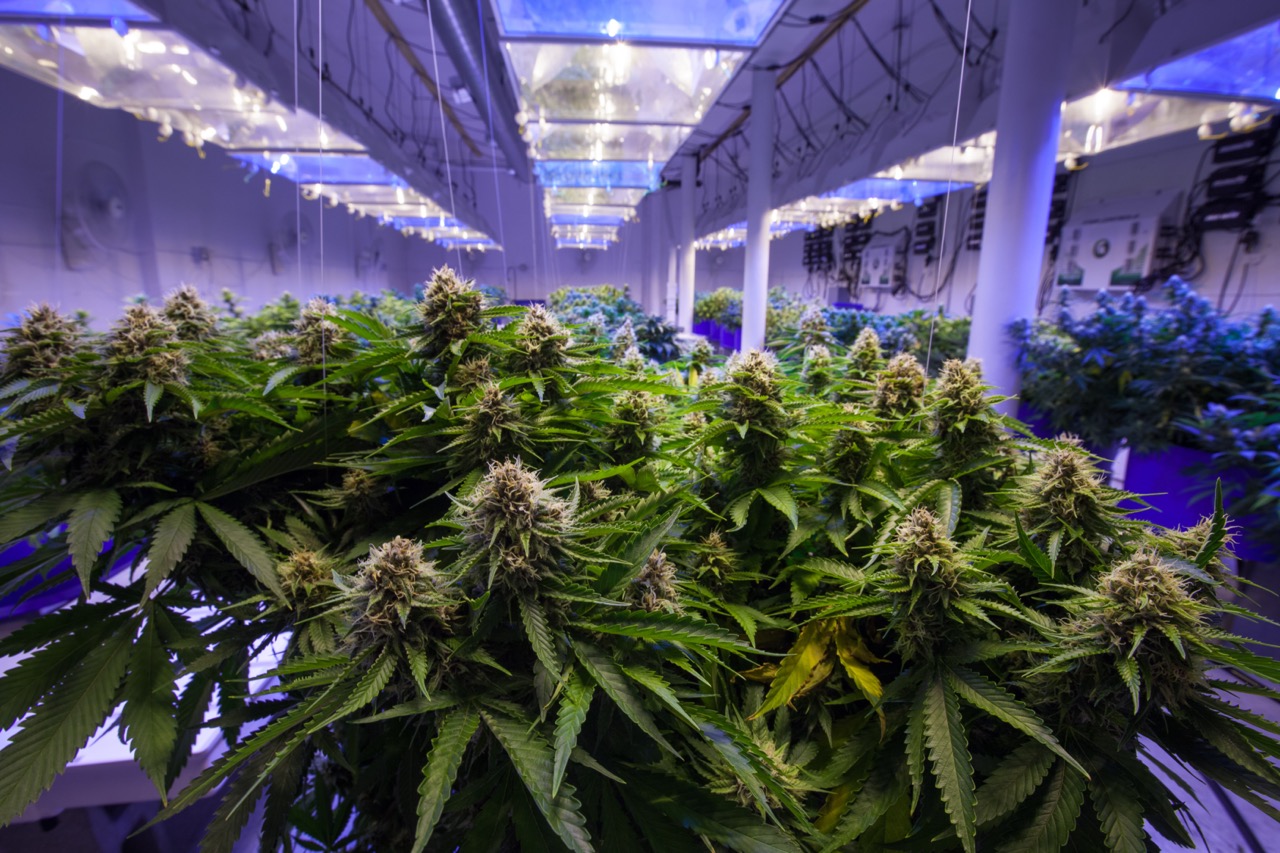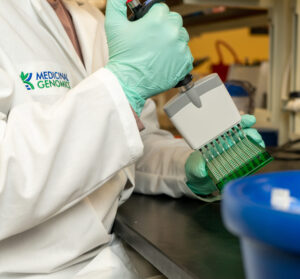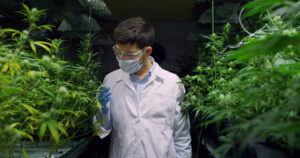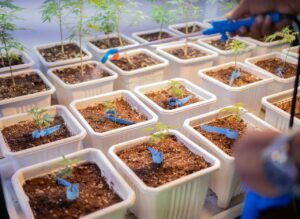Up until the 1970s, it was typical for cannabis flower to be packed with seeds. It was around that time that a cannabis farmer figured out that separating female cannabis plants—which yield the well-known, cannabinoid-rich buds—from their male counterparts would result “sensimilla,” or seedless cannabis flower.
Seeded cannabis is a major inconvenience for consumers, who have to pick out each seed before lighting up. Failure to remove seeds will give your cannabis an extra pop, as the seeds tend to explode when exposed to high heat. Seeds also compromise flavor and create a harsher smoke for the user that can further irritate their throat and lungs. Cannabis seeds also do not contain any cannabinoids, so they will not produce any of the desired effects from cannabis consumption.
Not only does sensimilla eliminate all these inconveniences, but unpollinated cannabis plants also grow bigger, more potent flowers. According to Small and Naraine (2016), cannabis is one of the only plant species that actively expands the number and size of its female sex organs in response to extended virginity. Larger and more abundant buds are produced by female cannabis plants the longer they remain unpollinated. From an evolutionary perspective, this increase in pollen-receptive tissue appears to be an adaptation meant to increase the likelihood of fertilizing the females in situations where males are extremely rare.
Does pollination alter cannabinoid composition?
The amount of yield loss associated with pollinated cannabis seems to be largely dependent on the strain of cannabis. However, in general, seeded cannabis plants tend to produce lower concentrations of cannabinoids (THC, CBD, CBG, etc.) when compared to their seedless counterparts.
A study by Meier and Mediavilla, 1998, found that pollination decreased the yield of essential oils in cannabis flowers by 56%. Another study by Feder et. al. (2021) found that fertilization of THC-rich and CBD-rich females resulted in a significant decrease of overall total phytocannabinoids concentration. However, there was a greater average cannabinoid decrease observed in the THC-rich cultivar (75%) than the CBD-rich females (60%).
A September 2022 study compared cannabinoid levels and yields in floral extracts from unpollinated and artificially pollinated industrial hemp flowers grown under identical growth chamber conditions. Surprisingly, they found that cannabinoid levels in floral extracts from the Finola cultivar, were reduced but not eliminated, by pollination of hemp flowers compared with levels in floral extracts from unpollinated flowers.
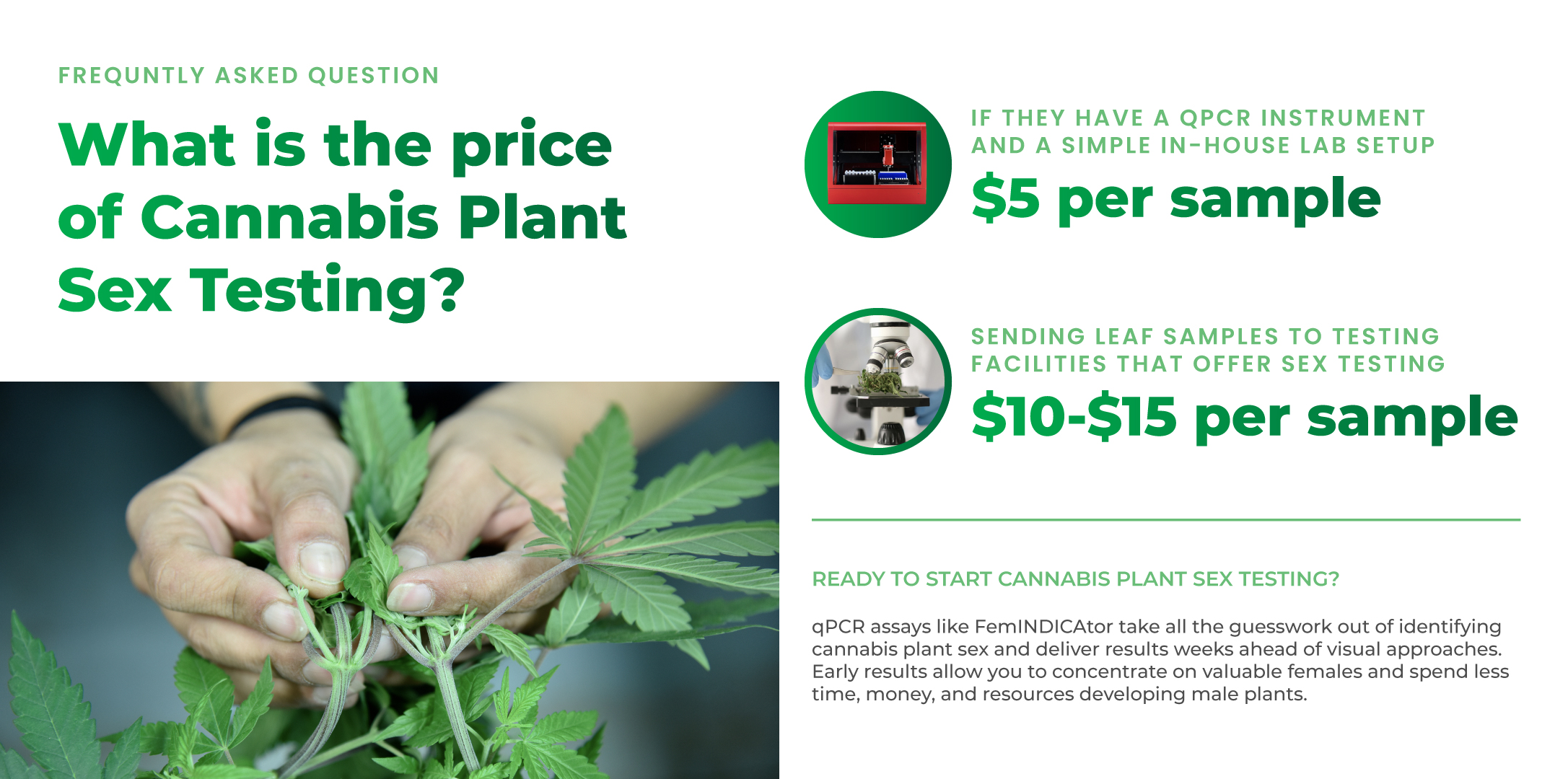
How do growers prevent fertilization of females?
For all these reasons, commercial cannabis growers take steps to ensure their crops are all female. Some growers purchase feminized seeds, which have been specifically bred to only produce female plants. However, feminized seeds are typically more expensive than traditional seeds and some believe plants grown from feminized seeds have reduced genetic diversity, which increases the likelihood of acquiring genetic deficiencies.
More commonly, cannabis growers use cloning as a method of propagating plants because it allows them to replicate the genetic characteristics of a desirable mother plant, such as potency, yield, flavor, and sex from one generation to the next.
Another option for growers who want to grow cannabis from traditional seeds is to use qPCR testing to identify and eliminate male cannabis plants before they can produce pollen.
Use DNA Testing to ID Males Just One Week After Germination
DNA-based testing can identify male cannabis plants weeks before they show any obvious signs of sex. As soon as one week after germination, DNA can be extracted from one of the plant’s leaflets. Then, the DNA is tested for the presence of a y-chromosome using the FemINDICAtor qPCR Pant Sex detection assay. If detected, males can be removed before they ever leave the seedling tray.
What is the price of Cannabis Plant Sex Testing?
Growers can test cannabis plants for gender for less than $5 per sample if they have a qPCR instrument and a simple in-house lab setup. Growers also have the option of sending leaf samples to testing facilities that offer sex testing as a service. Services for cannabis sex testing can range in price from $10 to $15 per plant, depending on the supplier and whether volume-based discounts are available.
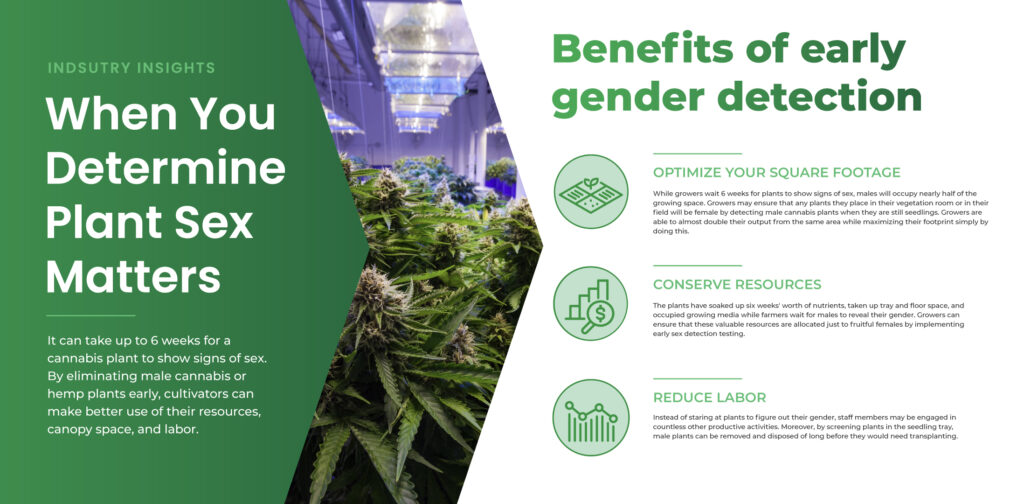
When You Determine Plant Sex Matters
Optimize Your Square Footage
Growers might have to wait up to six weeks for any signs of sexual activity in their plants. This means that for a period of six weeks, males will occupy half of the growing space. Growers may ensure that any plants they place in their vegetation room or in their field will be female by detecting male cannabis plants when they are still seedlings. Growers are able to almost double their output from the same area while maximizing their footprint simply by doing this.
Conserve resources.
The plants have soaked up six weeks’ worth of nutrients, taken up tray and floor space, and occupied growing media while farmers wait for males to reveal their gender. Growers can ensure that these valuable resources are allocated just to fruitful females by implementing early sex detection testing.
Reduce Labor
Making the visual determination of cannabis sex requires time and effort. Every plant must be examined carefully by workers. Instead of staring at plants to figure out their gender, staff members may be engaged in countless other productive activities. On the other hand, gathering leaf punches for DNA testing is a lot simpler. Moreover, by screening plants in the seedling tray, male plants can be removed and disposed of long before they would need transplanting.
Ready to Start Cannabis Plant Sex Testing?
qPCR assays like FemINDICAtor take all the guesswork out identifying cannabis plant sext and yield results weeks ahead of visual approaches. Early results allow you to concentrate on valuable females and spend less time, money, and resources developing male plants.
Several commercial growers have made investments in qPCR equipment and materials to enable them to do in-house tests for a range of genetic features, including plant sex and plant diseases. However, if you are not ready to make that investment, there are a number of testing labs that offer sex testing as a service and use Medicinal Genomics reagents. Fill out the form below, and we’ll be pleased to put you in touch with one of those labs!

